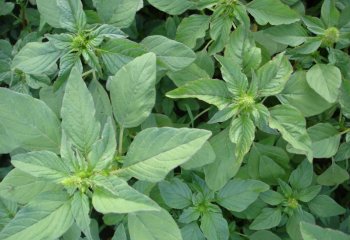Amaranth leaves side effects are often overlooked despite their numerous health benefits. While these nutrient-packed greens are celebrated for their vitamins and minerals, excessive consumption or improper preparation can lead to adverse reactions. This article explores the potential downsides of amaranth leaves, helping you make informed dietary choices.
Understanding the Nutritional Profile of Amaranth Leaves

Before diving into amaranth leaves side effects, it’s essential to understand their nutritional value. These leafy greens are rich in iron, calcium, vitamin C, and antioxidants, making them a powerhouse for boosting immunity and bone health. However, their high oxalate content and other compounds can pose risks if not consumed mindfully.
The Role of Oxalates in Amaranth Leaves
Oxalates are naturally occurring compounds found in many leafy greens, including amaranth. While they bind to minerals like calcium, aiding digestion, excessive intake can lead to kidney stones.
Individuals prone to kidney issues should moderate their consumption. Cooking methods like boiling can reduce oxalate levels, making the leaves safer to eat.
Potential Allergic Reactions to Amaranth
Some people may experience allergic reactions to amaranth leaves. Symptoms include itching, swelling, or digestive discomfort.
If you have a history of food allergies, introduce amaranth gradually. Consulting a healthcare provider can help rule out sensitivities before adding it to your diet.
Digestive Discomfort from Overconsumption
Eating too many amaranth leaves can cause bloating or diarrhea. Their high fiber content, while beneficial, may overwhelm sensitive stomachs.
Pairing them with easily digestible foods can mitigate these effects. Portion control is key to enjoying their benefits without discomfort.
Common Side Effects of Amaranth Leaves

While amaranth leaves side effects are rare, they can occur under certain conditions. This section delves into the most frequently reported issues and how to address them.
Gastrointestinal Issues Linked to Raw Consumption
Raw amaranth leaves contain compounds that may irritate the gut lining. Light cooking or steaming can neutralize these irritants.
Those with IBS or similar conditions should avoid raw leaves. Opting for cooked preparations ensures better digestibility.
Impact on Thyroid Function
Amaranth leaves contain goitrogens, which may interfere with thyroid hormone production. People with hypothyroidism should consume them in moderation.
Balancing them with iodine-rich foods can counteract potential effects. Regular monitoring of thyroid levels is advisable for frequent consumers.
Blood Pressure Fluctuations
Amaranth leaves are high in potassium, which regulates blood pressure. However, excessive intake might cause hypotension in some individuals.
Those on blood pressure medication should consult a doctor. Moderation ensures cardiovascular benefits without unwanted drops in pressure.
How to Minimize Amaranth Leaves Side Effects

Preventing amaranth leaves side effects involves proper preparation and mindful eating habits. Here’s how to enjoy these greens safely.
Cooking Methods to Reduce Toxins
Boiling amaranth leaves for 10-15 minutes significantly lowers oxalate levels. Discarding the cooking water further reduces anti-nutrients.
Stir-frying or sautéing preserves nutrients while enhancing flavor. Experimenting with different methods can optimize both safety and taste.
Pairing with Complementary Foods
Combining amaranth leaves with calcium-rich foods like yogurt mitigates oxalate absorption. Vitamin C enhances iron uptake, maximizing nutritional benefits.
Avoid pairing them with high-oxalate foods like spinach in a single meal. Strategic food combinations can amplify health benefits while minimizing risks.
Recommended Serving Sizes
A handful of cooked amaranth leaves per meal is generally safe. Overconsumption can trigger the side effects discussed earlier.
Listening to your body’s signals helps adjust portions accordingly. Gradual introduction allows the digestive system to adapt.
FAQs About Amaranth Leaves Side Effects
Can amaranth leaves cause kidney stones?
Yes, due to their oxalate content, excessive consumption may contribute to kidney stones in susceptible individuals.
Are amaranth leaves safe for pregnant women?
In moderation, yes. However, pregnant women should consult their doctor to avoid potential complications.
How do I know if I’m allergic to amaranth leaves?
Look for symptoms like itching, rashes, or stomach pain after consumption. An allergy test can confirm suspicions.
Can I eat amaranth leaves daily?
Small, cooked portions daily are generally safe, but variety in your diet is essential to prevent nutrient imbalances.
Do amaranth leaves interact with medications?
They may interact with blood pressure or thyroid medications. Always seek medical advice if you’re on prescription drugs.
Video

Conclusion
While amaranth leaves side effects are relatively uncommon, understanding them ensures a balanced and safe dietary experience. By moderating intake, employing proper cooking techniques, and pairing them wisely, you can enjoy their immense health benefits without worry. Always prioritize personalized dietary choices based on your health needs. `